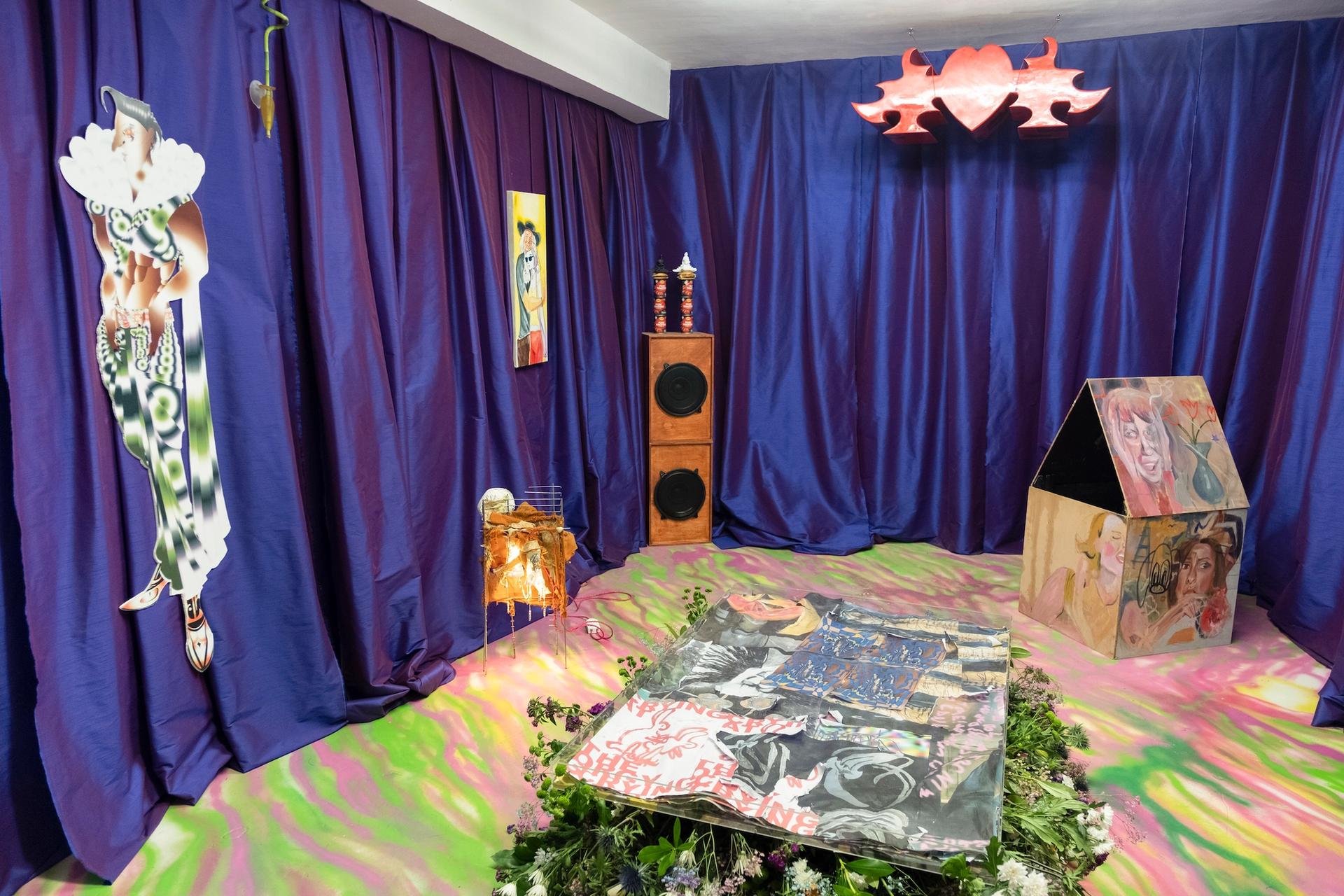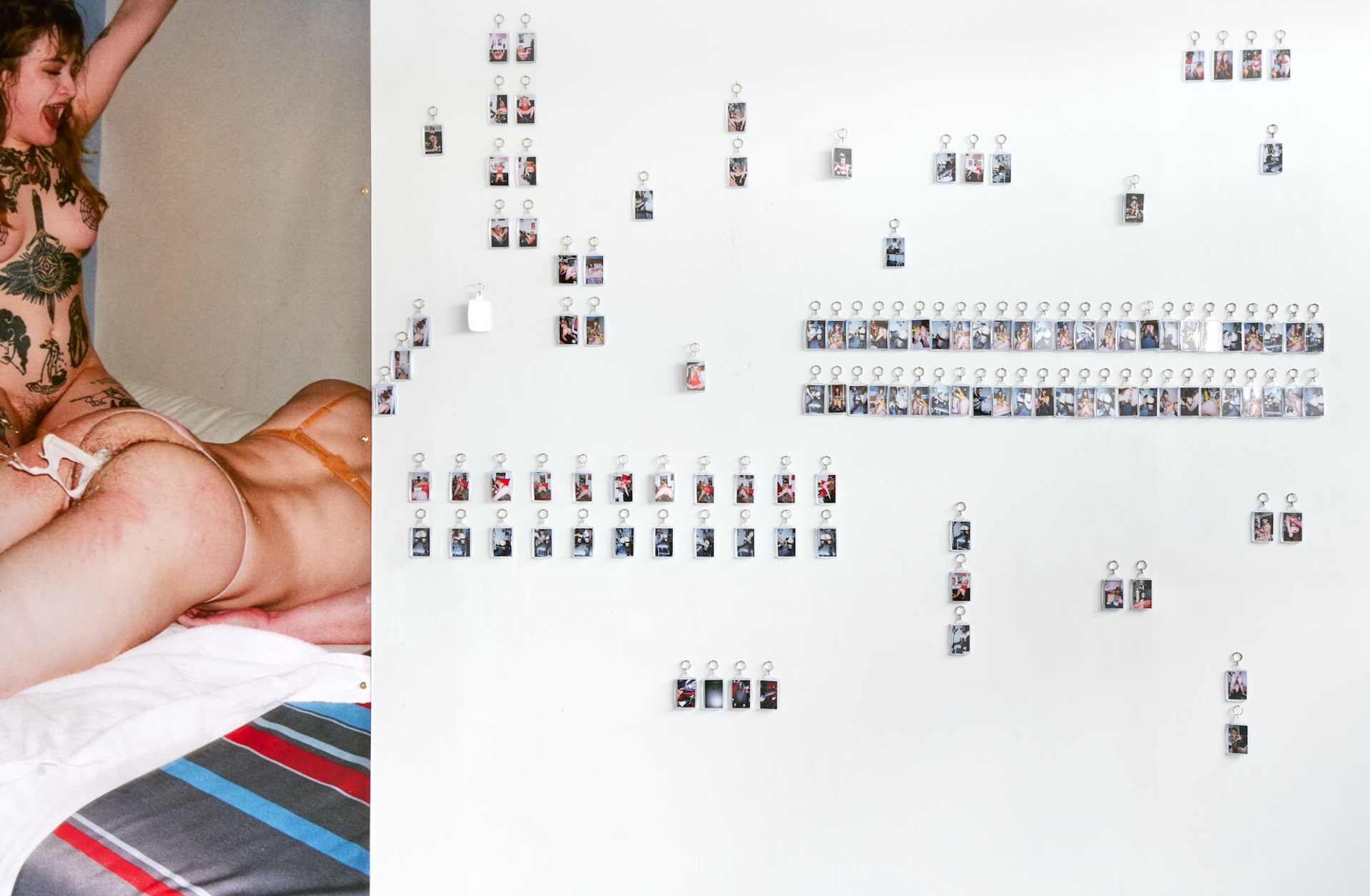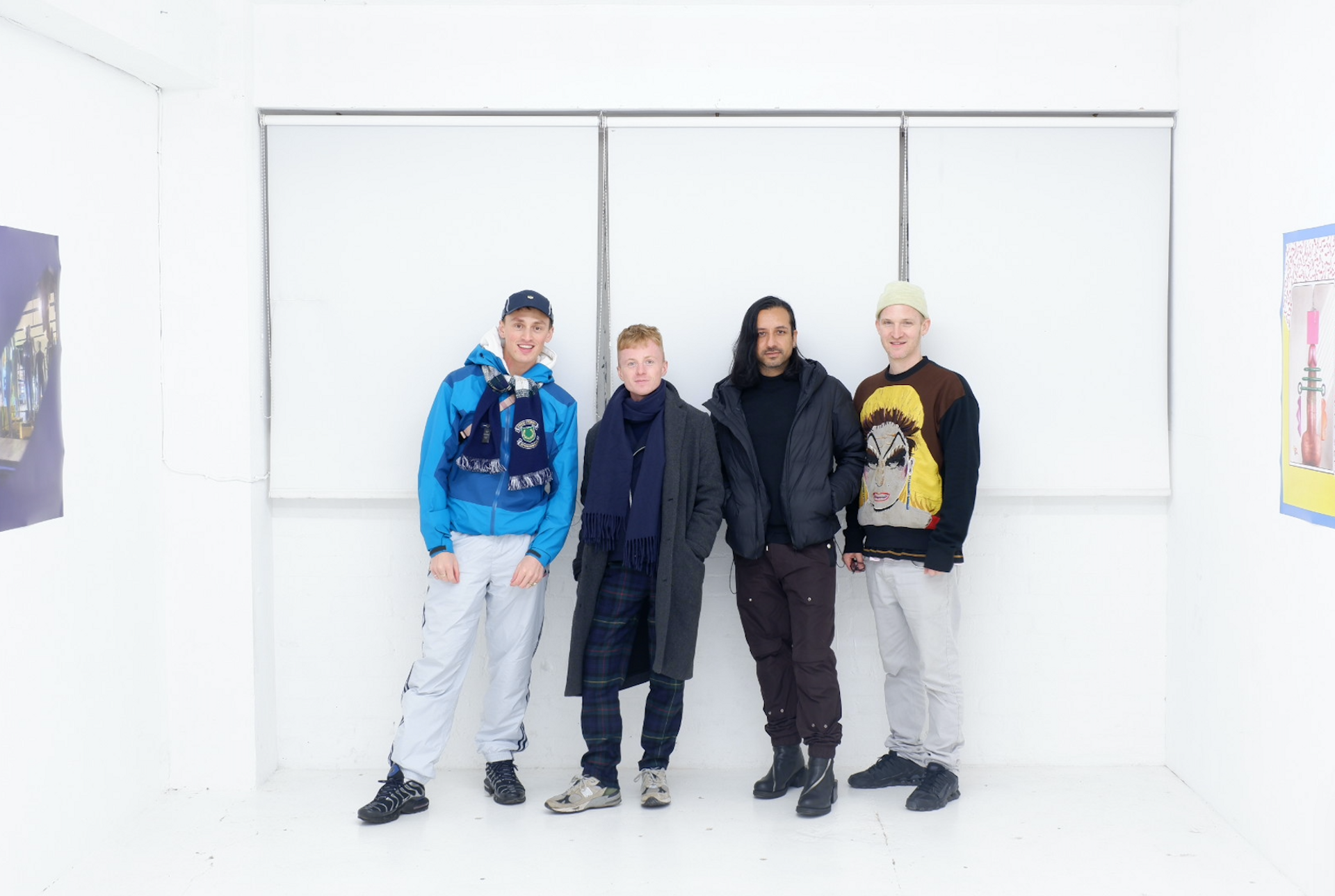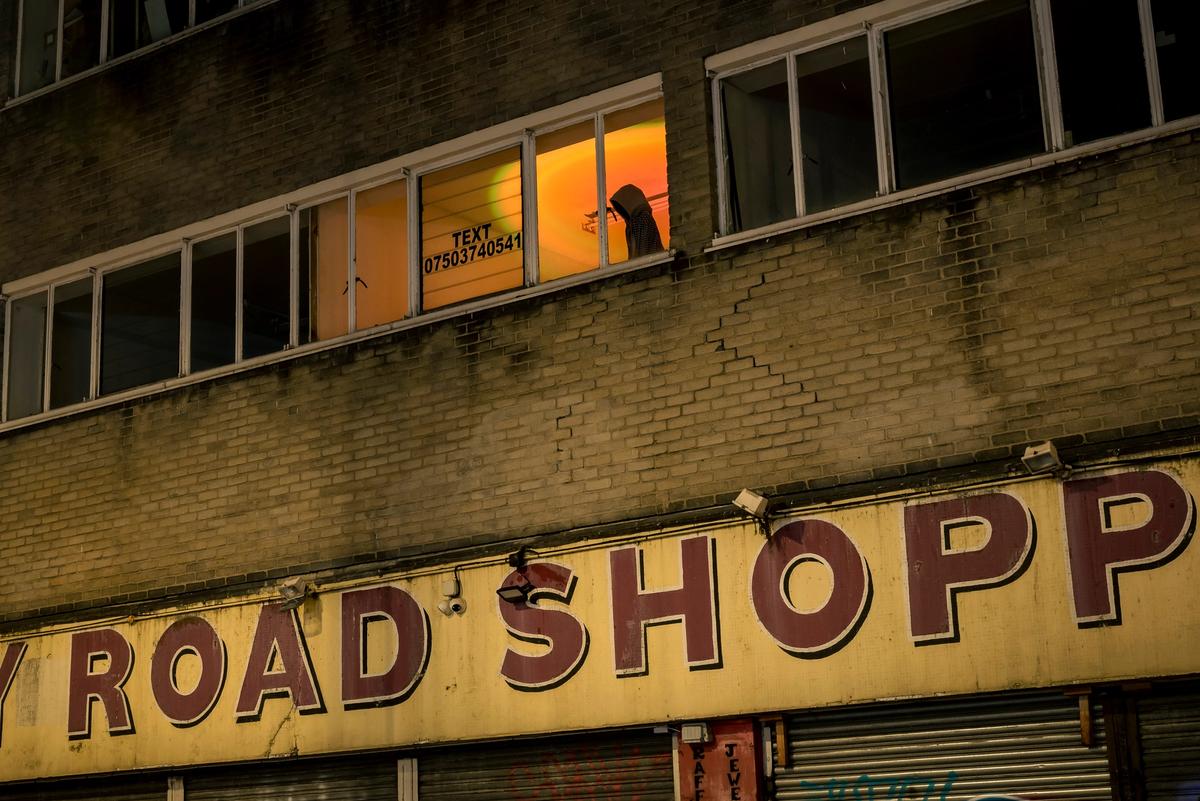When George Henry Longly was told his artist studio of nearly 15 years in Dalston, East London was soon being sold to property developers he was unsurprised. Located on Ridley Road Market, a vital resource and hub for the neighbourhood’s large Afro-Caribbean diaspora, the surrounding area has been threatened by gentrification for the past decade and its most precarious residents are at increasing risk of displacement.
Nonetheless, the news was still unwelcome: Henry Longly had over the years come to consider the studio more than just a work space, but a domestic and social one too, having used it as an afterparty location for his cult queer club night Anal House Meltdown, organised with the fellow artist Prem Sahib. “We used our studio to have fun and be free,” says Henry Longly, “I wanted to do something that would honour these memories.”

Installation view of Grotto, Ridley Road Project Space.
Thinking fast, he decided to turn the studio into Ridley Road Project Space (RRPS), partnering with Sahib to stage a quick succession of shows as a “political gesture” to bid the space farewell. Over the past six months the venue has hosted 13 exhibitions each lasting for one week. They have included a group show of posters fundraising for the LGBTQ+ mental health charity ELOP, and a solo show of glass sculptures and installations of carved camel bones and taxidermied mice by the Australian artist Leo Costelloe. Commercial, but not focused on sales, the idea behind these shows is to encourage artists to experiment and make mistakes, Henry Longly says, something that he believes is far less common these days in a city where affordable space is scarce and market forces dominate.

Roxy Lee at Ridley Road Project Space
Some of these artists are ones who rarely show in traditional curatorial and commercial settings, such as the photographer Roxy Lee, who is known in the queer London community for documenting gay techno parties such as Adonis, and is recognised more so in editorial fashion circles than in the art world. In part because of this broad appeal—as well as Henry Longly and Sahib’s established network—Ridley Road Project Space's shows have become well-trafficked social events, attended by the likes of Wolfgang Tillmans.
Moreover they have provided a space for forging intergenerational connections within the London queer scene, with Henry Longly and Sahib having been joined early on by two younger arts workers: the gallery professional Laurie Barron and the writer Joe Bobowicz. "There is a queer solidarity occurring here", Henry Longly says, a way of “sharing skills and passing on knowledge outside of institutions or commercial markets".
The final show before the studio is demolished opens tonight (until Monday). Bringing together around 60 artists in the small space, the works will be crammed next to each other in what Sahib describes as a “symbol of community and generosity”. The artist list includes Gray Wielebinski, Jack O'Brien, Adham Faramawy and the DJ Princess Julia; Sahib and Henry Longly will also show work.
Sahib says that a forthcoming publication will document and expand upon the past six months. The project is now, according to Barron, in talks to travel to Saint Leonard's in Hastings, and also morph into a roving space.

The Ridley Road Project Space Team. Joe Bobowicz, Laurie Barron, Prem Sahib and George Henry Longly (L-R)
When speaking to The Art Newspaper, the RRPS team make clear that this is not a tale of art overcoming gentrification. Rather they hope to demonstrate how, in the face of development, art can be used as a means to forge long-lasting and generative relationships. In harnessing a sense of urgency and bringing their community together, the team hope to have created a sense of solidarity that can weather, and outlive, a crisis.


